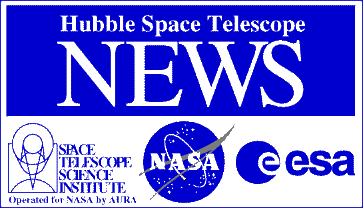

EMBARGOED UNTIL: 1:00 p.m. EST TUESDAY, JANUARY 14, 1997
Harry Ferguson
Space Telescope Science Institute, Baltimore, MD
(Phone: 410-338-5098)
PRESS RELEASE NO.: STScI-PR97-02
The isolated stars dwell in the Virgo cluster of galaxies, about 60 million light-years away. The results suggest this population of "lone stars" accounts for 10 percent of the Virgo cluster's mass, or 1 trillion Sun-like stars adrift among the 2,500 galaxies in Virgo.
"Our discovery provides a new tool for studying clusters of galaxies," says Harry Ferguson of Space Telescope Science Institute in Baltimore, Maryland.
The distribution of the stars in Virgo could help astronomers probe the distribution of dark matter in the cluster. (Dark matter is an unknown type of matter that accounts for most of the mass of the universe.)
Another possible spinoff is that the stars detected, which are the brightest members of the red giant class, may serve as "standard candles" (stars that can be used for calibrating distances), providing an independent method for measuring cosmological distances to Virgo. Such measurements are key to estimating the expansion rate and age of the universe.
These results are being presented at the 189th Meeting of the American Astronomical Society in Toronto, Canada, by Ferguson and co-investigators Nial Tanvir (University of Cambridge, Cambridge, United Kingdom) and Ted von Hippel (University of Wisconsin).
Intergalactic stars have been predicted to exist as a result of galaxy interactions and mergers early in a galaxy cluster's history. These close encounters should have ripped stars out of their home galaxies and tossed them into intergalactic space, where they drift free of the gravitational influence of any single galaxy.
It was predicted that the stars should appear as a diffuse excess of light in Virgo, and there have previously been observations from ground-based telescopes that report just such an excess. "However, there are large uncertainties in the ground-based measurements, and it is not clear whether the diffuse light originates from galaxies too faint to detect individually or from a more uniform sea of stars," says Ferguson.
The accidental discovery in 1996 of planetary nebulae (stellar remnants) in Virgo, which are far removed from any galaxy, offered additional evidence that such an intergalactic population really exists.
The Hubble astronomers found the background stars by taking an exposure of a "blank" portion of sky in Virgo. The position is in the vicinity of the giant elliptical galaxy M87 in the center of Virgo, but far enough from the galaxy for the stars not to be members of M87's halo. The Virgo field was compared to the Hubble Deep Field (HDF) image which represents a region of sky devoid of any nearby galaxy cluster. With the HDF serving as the control, the astronomers counted approximately 600 sources down to 27.8 magnitude.
The stars are bright red giants -- stars late in their lives. Presumably there are many fainter stars -- perhaps as many as 10 million -- in the same field but are below Hubble's sensitivity.
"These stars are truly intergalactic because they are so isolated their motion is probably governed by the gravitational field of the cluster as a whole, rather than the pull of any one galaxy," says Ferguson.
The Space Telescope Imaging Spectrograph (STIS) and Near Infrared Camera and Multi-Object Spectrometer (NICMOS) planned for installation on Hubble this February will be used to help understand the history of the stellar outcasts.
Comparison of heavy element abundances in the "loner" stars and in the Virgo galaxies should help to uncover whether the stars wandered off from the outskirts of galaxies that still exist, are the remnants of galaxies that were completely disrupted, or were somehow formed in the dark reaches of intergalactic space.